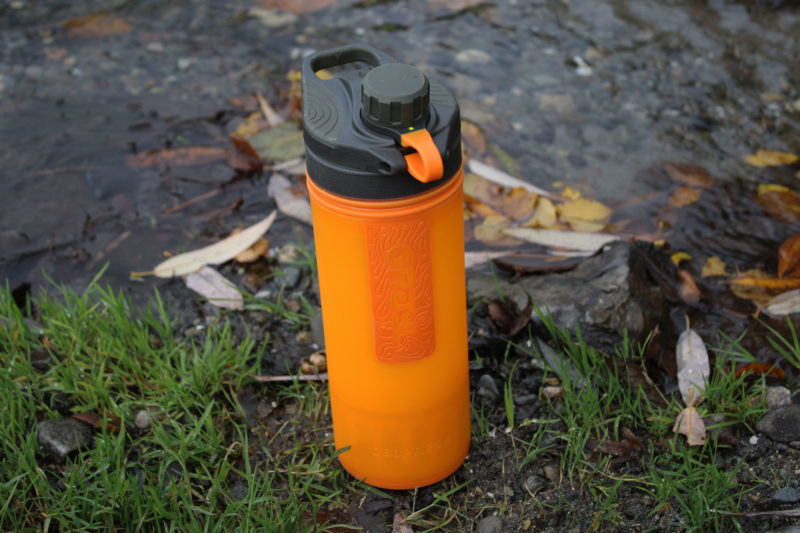 SBM photographs and video
SBM photographs and videoGrayl has created a water-treatment system that is two reservoirs and pump all in one compact unit.
Unless you’re willing to risk a most unpleasant bout of giardiasis or worse on your backcountry ventures, some kind of water-treatment system is a necessity. I much prefer filters to chemical treatments or boiling, so I was immediately intrigued by Grayl’s Geopress, which offers an interesting alternative to the hand-pump type filter I’ve been using.
Unlike pump-operated filters, the Grayl Geopress combines a filter and water bottle in one unit. An inner bottle, with a replaceable filter attached, fits snugly inside an outer shell with a gasket providing a watertight seal between them. There are no moving parts likely to fail in the field, and very little opportunity for the kinds of accidental contamination that’s possible in pump-type filters, such as dropping an output hose into untreated water. Simply pull out the Geopress inner bottle and set it aside, then dip the outer shell in untreated water to fill it. Set it upright on a flat surface, reinsert the inner bottle, and open the pour spout’s threaded cap a half turn for venting air. Press the bottle down slowly and firmly into the outer shell. This forces the untreated water through the filter at the bottom of the inner bottle. It took me about 40 seconds to filter 24 ounces of water, much faster than pump-type filters I’ve used.
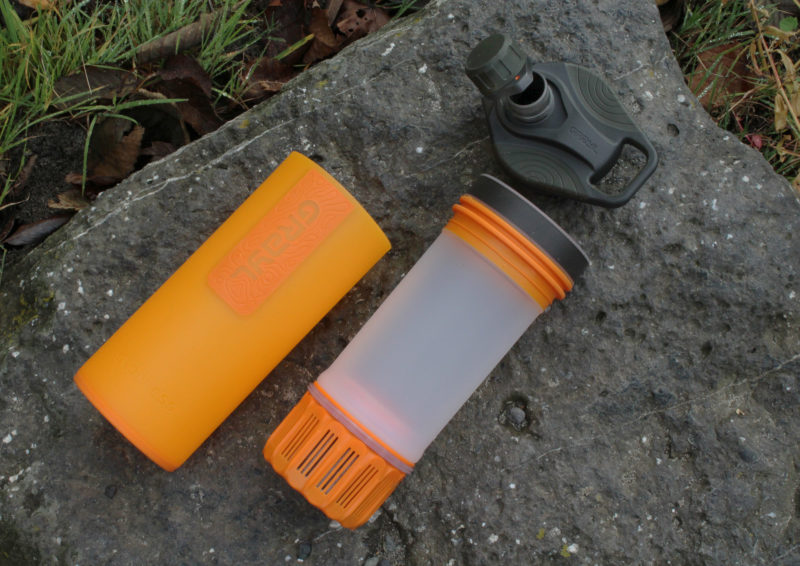
The filter at the bottom of the inner cylinder incorporates the gasket that forces the water through the filter. The replacement filters come with a new gasket to assure the watertight seal between the two cylinders.
The filter uses a combination of ceramic fibers for particulate removal, positively charged ions to bind pathogens, and activated carbon to adsorb chemicals and impurities. The manufacturer claims that the Grayl filter removes 99.9999% of bacteria, 99.99% of viruses, and 99.9% of protozoa, claims that have I found verified by independent laboratory tests for the similar Grayl Ultralight model. Replacement filters are available, and recommended after filtering 65 gallons of water (350 cycles), or when the time needed to press the inner bottle into the outer shell nears 25 seconds. The filters include the gasket, so that critical part is regularly replaced.
The Geopress is made of durable, BPA-free plastic throughout. The design is just right for easy drinking or spill-proof pouring. An arrow on the drinking cap clearly indicates open and closed positions, and the raised “Max Fill” line on the bottle is a useful feature as well, though a contrasting color would make it easier to see. A rigid plastic loop on the cap accommodates a carabiner for secure carrying.
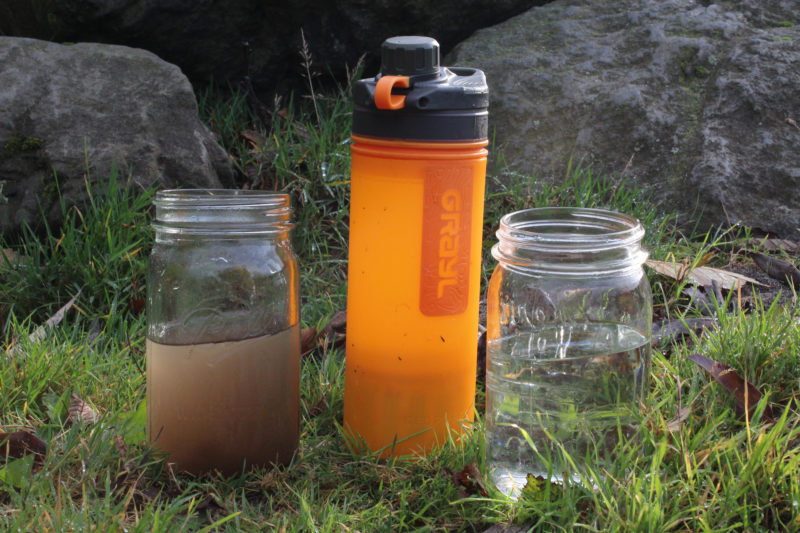
The Geopress turned the murky stream water at left to the clear water at right. It’s best to filter the clearest water you have access to. The silt-laden water here was used to highlight a before and after difference. Many of the contaminants removed by the filter are invisible.
There are just a few things to consider. Those with small hands might find it difficult to pull the inner bottle from the outer shell—that’s an operation requiring a firm grip and a steady pull-and-twist. My wife, whose hand can comfortably span an octave on a piano keyboard, had some difficulty here. When drawing water from water too shallow to dip the outer shell, you’ll need a cup to fill it. The Geopress filters only 24 oz of water at a time, so while purifying a single bottle of water goes quickly, filtering larger amounts requires emptying the inner sleeve into a separate container and repeating the operation several times.
For best results, follow the instructions and position the Grayl on a low, stable surface so that you can slowly lean the full weight of your upper body on the top of the bottle, with your arms straight and locked, to force water through the filter. Kneeling on the ground with the Grayl between my knees worked best; in that position, it took me about 8 seconds to filter a full bottle of water. It’s also possible to operate the Grayl while standing by putting it not far above knee height and keeping arms straight to let body weight do the work. The Grayl is easy to operate ashore where there’s no shortage of solid ground, but because space is limited aboard my sail-and-oar beach cruiser, I found it a bit awkward to use onboard. Standing up and pressing down on the Grayl while it’s on the thwart can be a bit dicey in a round-bottomed boat with a beam of just 4′6″. If you have room aboard to kneel, though, it’ll be easy to filter water while afloat.
If what you need is a method of very quickly treating drinking water one bottle at a time, the Geopress shines; it does everything it’s designed to do, and does it very well. Pricing for the Geopress is comparable to popular pump-type filters, and I was impressed with its quality, simplicity, and ease of use.![]()
Tom Pamperin is a freelance writer who lives in northwestern Wisconsin. He spends his summers cruising small boats throughout Wisconsin, the Great Lakes, and along farther afield. He is a frequent contributor to Small Boats Monthly and WoodenBoat.
The Geopress is available directly from Grayl for $89.95 and available from selected retailers. Replacement Purifier Cartridges are available for $24.95.
Is there a product that might be useful for boatbuilding, cruising, or shore-side camping that you’d like us to review? Please email your suggestions.
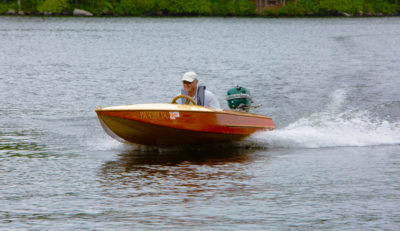
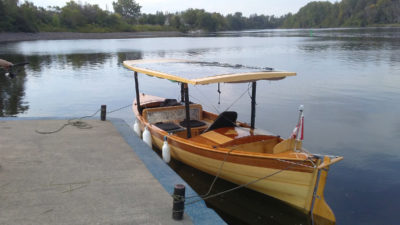
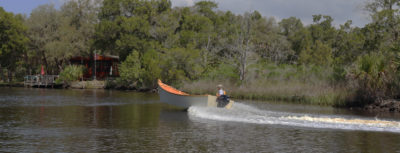
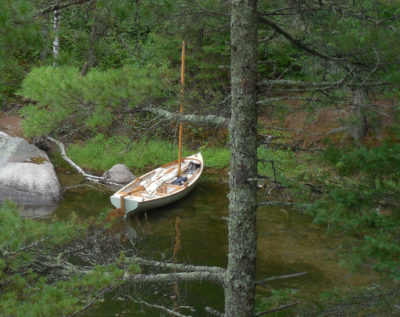
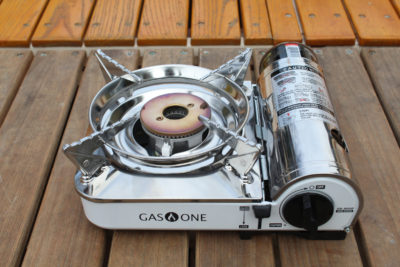
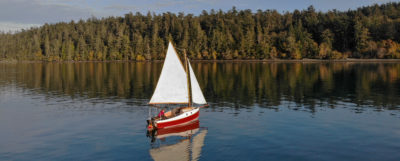

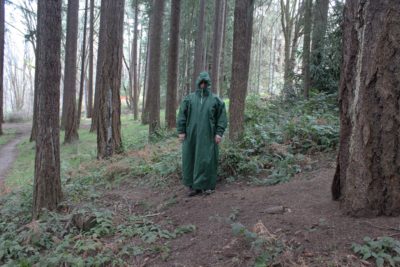
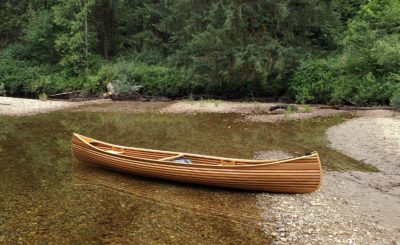

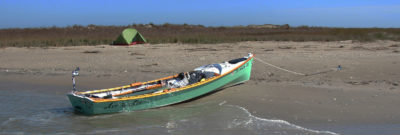
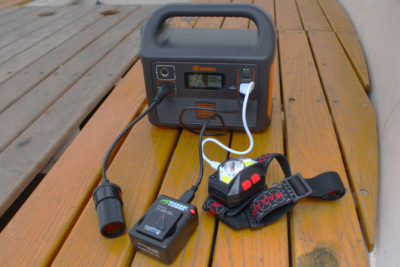

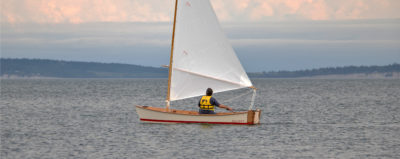
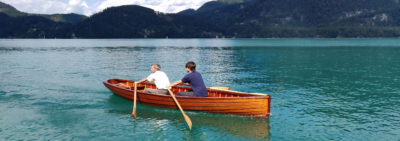
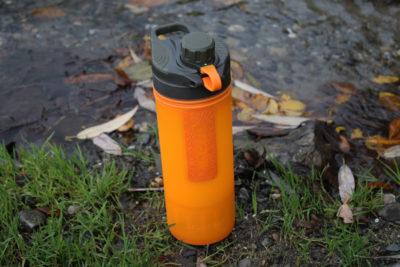
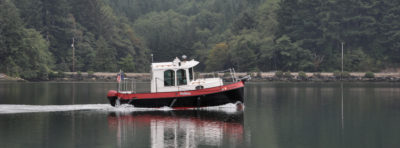
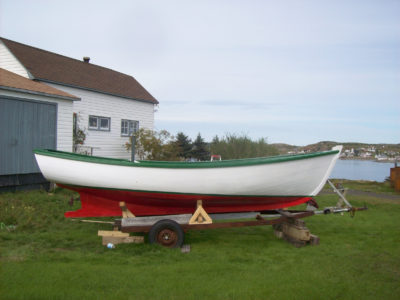
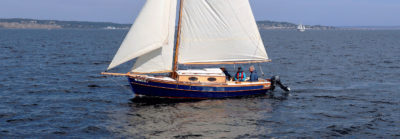


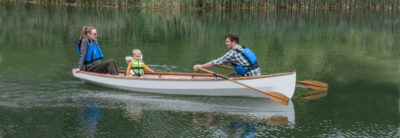
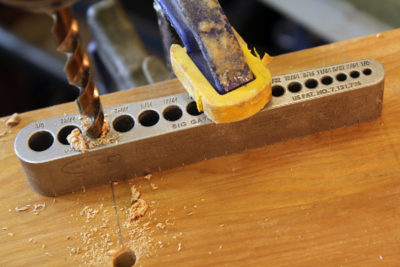
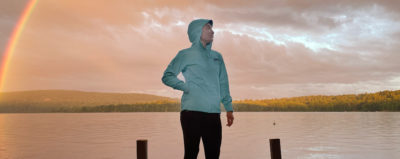
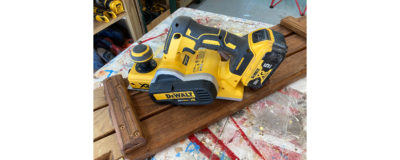
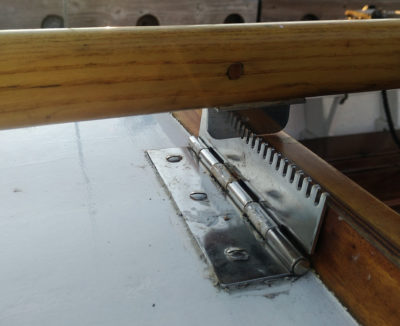
Thanks for the tip, Tom. This looks like a great product. I really enjoy the product reviews in SBM. I’ve found some awesome gear this way.
Can the filter be back-flushed? Doing so would extend the life of the filter before it has to be replaced.
I always carry a folding bucket (home made out of a dry bag) in kayak cruising. When you have to deal with murky water, it helps a lot to scoop up a bucket of water and let it sit for a few minutes. A lot of the sediment will settle out, which makes it easier to filter and extends the life of the filter.